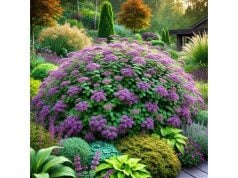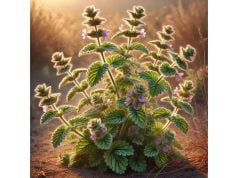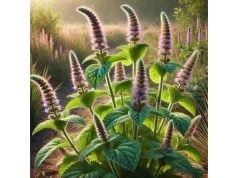
Hemerocallis, commonly known as daylily, is an extraordinary perennial celebrated not only for its brilliant, ephemeral blooms but also for its multifaceted benefits and diverse applications. Revered in traditional medicine and modern culinary arts alike, this herb offers a wealth of antioxidants, anti-inflammatory compounds, and essential nutrients. Its use ranges from enhancing skin health to aiding in stress reduction, making it a cherished ingredient in herbal remedies and gourmet dishes. In this comprehensive guide, we explore the botanical features, phytochemical profile, health benefits, safe usage practices, and scientific studies surrounding Hemerocallis, providing you with an in-depth understanding of this remarkable plant.
Table of Contents
- Botanical Traits & Identification
- Phytochemical Composition & Active Ingredients
- Health Benefits & Inherent Properties
- Applications, Dosage, and Safety Guidelines
- Research Findings & Key Studies
- Frequently Asked Questions
Hemerocallis: Botanical Traits & Identification
Hemerocallis, better known as the daylily, belongs to the Asphodelaceae family and comprises over 80 species widely distributed across Asia, with several species now naturalized in North America and Europe. These herbaceous perennials are prized for their unique blooming cycle—each flower typically lasts only a single day, yet the plant produces multiple blooms throughout its growing season. The leaves are long, strap-like, and arching, creating an attractive, grass-like clump that serves as a stunning backdrop for the vivid, trumpet-shaped flowers.
Taxonomy and Morphology
Daylilies are classified under the genus Hemerocallis. Their taxonomy has been refined over the years through morphological and molecular studies. The species exhibit considerable variation in flower color—from vibrant oranges and yellows to subtle pinks and reds—while some cultivars even offer bi-colored or variegated patterns. Despite the short lifespan of individual flowers, the plant’s overall display is prolonged due to continuous blooming cycles, especially during the summer months. The robust root system of Hemerocallis enables it to thrive in a variety of soil types, though it prefers well-drained, fertile conditions with ample sunlight or partial shade.
Natural Habitat and Cultivation
Originally native to regions of China, Korea, and Japan, Hemerocallis has adapted to diverse environments. In its natural habitat, daylilies often grow in open meadows, along riverbanks, and in disturbed areas where they can rapidly colonize the landscape. Gardeners and landscapers appreciate its low maintenance and resilience; daylilies tolerate drought and can flourish in poor soil conditions while still providing a spectacular floral show. Moreover, the plant’s ability to naturalize quickly has made it a popular choice for sustainable landscaping projects aimed at reducing soil erosion and enhancing garden biodiversity.
Cultural and Edible Significance
Beyond its ornamental value, Hemerocallis holds a significant place in culinary traditions, particularly in East Asia. In Chinese cuisine, the flower buds and tubers are used in stir-fries, soups, and salads, prized for their delicate flavor and crunchy texture. Traditional medicinal practices have also embraced the daylily for its reputed benefits, including detoxification, anti-inflammatory effects, and the promotion of restful sleep. Its dual role as both a food and medicine highlights the plant’s versatility and the depth of cultural knowledge surrounding its use.
Identification Tips
For enthusiasts keen on cultivating daylilies, proper identification is key. Look for:
- Leaf Structure: Long, narrow, and arching leaves that form a basal clump.
- Flower Characteristics: Trumpet-shaped blooms that open sequentially; note the color and pattern variations.
- Growth Habit: A robust clump-forming habit with a fibrous root system.
- Blooming Pattern: Noticeable sequential blooming that ensures a continuous floral display.
Ecological Impact and Sustainability
Daylilies not only offer aesthetic appeal but also contribute to environmental sustainability. Their extensive root systems help stabilize soil and prevent erosion, while their low water requirements make them an eco-friendly option in xeriscaping. Additionally, their continuous blooming cycle provides a valuable nectar source for pollinators such as bees and butterflies, promoting local biodiversity. The natural hardiness of Hemerocallis makes it a suitable candidate for urban greening projects and public landscaping initiatives.
Historical Context and Modern Relevance
Historically, Hemerocallis has been cultivated for centuries, with ancient texts and artworks celebrating its beauty and resilience. In modern horticulture, the daylily is celebrated for its ease of care and versatility, leading to the development of numerous cultivars that cater to various aesthetic preferences. Its adaptability has also sparked interest in botanical research, particularly in understanding the genetic basis for its rapid blooming and stress resistance. This ongoing study not only enhances our appreciation of the plant but also informs sustainable cultivation practices.
In conclusion, the botanical traits and identification of Hemerocallis underscore its unique appeal as both an ornamental and functional plant. From its vibrant, short-lived blooms to its resilient growth habits and ecological benefits, the daylily stands out as a prime example of nature’s capacity for beauty and utility. Whether you are a seasoned gardener or a curious beginner, understanding these characteristics can enrich your appreciation and inform your cultivation of this remarkable herb.
Hemerocallis: Phytochemical Composition & Active Ingredients
Hemerocallis is not only celebrated for its ornamental charm but also for its diverse array of bioactive compounds that contribute to its therapeutic potential and nutritional value. The phytochemical profile of daylilies includes a range of naturally occurring substances that have been linked to antioxidant, anti-inflammatory, and immunomodulatory activities. Understanding these active compounds is essential for appreciating the full spectrum of Hemerocallis benefits.
- Flavonoids
Flavonoids are a prominent group of polyphenolic compounds renowned for their antioxidant properties. In Hemerocallis, these compounds help neutralize free radicals and reduce oxidative stress, contributing to cellular protection and longevity. Studies suggest that the flavonoid content in daylilies may play a role in reducing inflammation and supporting cardiovascular health. Their molecular structure, characterized by multiple hydroxyl groups, allows them to effectively scavenge reactive oxygen species, making them invaluable in both traditional and modern therapeutic contexts. - Phenolic Acids
Phenolic acids, including compounds such as caffeic acid and ferulic acid, are integral to the anti-inflammatory and antioxidant properties of Hemerocallis. These acids contribute to the reduction of chronic inflammation by modulating key signaling pathways in the body. Additionally, phenolic acids have been linked to improved skin health and the prevention of oxidative damage at the cellular level. Their synergistic interaction with flavonoids enhances the overall bioactivity of the plant extract, reinforcing the herb’s reputation as a natural remedy for various inflammatory conditions. - Saponins
Saponins are glycosidic compounds known for their surfactant properties, which enable them to interact with cell membranes and modulate immune responses. In daylilies, saponins have been observed to exhibit cholesterol-lowering effects and may play a role in promoting cardiovascular health. Their ability to form complexes with sterols in cell membranes also contributes to their antimicrobial activity. The extraction and purification of saponins from Hemerocallis have become a focus of research, particularly for their potential use in natural health supplements and functional foods. - Polysaccharides
Polysaccharides in Hemerocallis are complex carbohydrates that have garnered attention for their immunomodulatory effects. These molecules can stimulate the activity of immune cells, enhancing the body’s natural defense mechanisms. In traditional medicine, daylily polysaccharides have been used to promote overall wellness and improve resistance to infections. Recent studies indicate that these compounds may also aid in reducing blood sugar levels and supporting metabolic health, making them a subject of interest in nutritional research. - Carotenoids
Carotenoids are pigments responsible for the vibrant colors observed in many plants, including certain cultivars of Hemerocallis. These compounds function as powerful antioxidants, protecting cells from damage caused by ultraviolet radiation and oxidative stress. In addition to their role in skin protection and eye health, carotenoids may also support immune function and reduce the risk of chronic diseases. The presence of carotenoids in daylily extracts adds a nutritional dimension to the herb, further enhancing its value in both culinary and medicinal applications. - Alkaloids
Although present in smaller quantities, alkaloids in Hemerocallis contribute to the plant’s overall bioactivity. These nitrogen-containing compounds have been associated with various pharmacological effects, including mild analgesic and anti-spasmodic properties. While the exact mechanisms of action remain under investigation, preliminary research suggests that the alkaloids in daylilies may interact with neurotransmitter receptors, potentially offering benefits for pain management and mood regulation. However, their low concentration typically renders them a supportive component within the broader phytochemical profile. - Essential Oils
The volatile essential oils extracted from Hemerocallis are responsible for the subtle, pleasing aroma of the flowers. These oils possess antimicrobial and anti-inflammatory properties, which contribute to the herb’s use in aromatherapy and topical applications. Although the yield of essential oils from daylilies is relatively low compared to other aromatic plants, their concentrated nature offers therapeutic potential when incorporated into skincare products and holistic remedies. Research into the composition of these oils continues to uncover new applications for Hemerocallis in natural medicine.
The extraction and quantification of these compounds typically involve advanced analytical techniques such as high-performance liquid chromatography (HPLC) and gas chromatography-mass spectrometry (GC-MS). These methods not only allow researchers to isolate and identify the individual components but also to standardize extracts for potential therapeutic use. The synergistic interaction among these bioactive compounds is believed to enhance the overall efficacy of Hemerocallis, contributing to its reputation as a potent natural remedy.
Variations in phytochemical composition can occur based on factors such as the specific species or cultivar of Hemerocallis, growing conditions, and the time of harvest. For instance, daylilies grown in nutrient-rich soils under optimal climatic conditions tend to have higher concentrations of flavonoids and phenolic acids. Conversely, environmental stressors such as drought or excessive sunlight may alter the plant’s chemical profile, influencing its therapeutic properties. This variability underscores the importance of quality control in the cultivation and processing of Hemerocallis for medicinal or nutritional use.
In summary, the phytochemical composition of Hemerocallis reveals a complex interplay of active ingredients that contribute to its diverse therapeutic and nutritional applications. From the potent antioxidant effects of flavonoids and carotenoids to the immunomodulatory properties of polysaccharides and saponins, each compound plays a vital role in the overall health benefits of the herb. As research advances, a deeper understanding of these compounds may pave the way for innovative applications in natural health products and functional foods.
Hemerocallis: Health Benefits & Inherent Properties
Hemerocallis has long been celebrated for its impressive range of health benefits and inherent properties that make it a valuable addition to both traditional medicine and modern wellness regimens. Rich in antioxidants, anti-inflammatory agents, and essential nutrients, daylily extracts have been linked to a host of positive effects on human health. From supporting cardiovascular wellness and immune function to promoting skin vitality and mental relaxation, Hemerocallis offers a holistic approach to well-being.
Antioxidant and Anti-inflammatory Effects
One of the primary benefits of Hemerocallis is its robust antioxidant capacity. The flavonoids, carotenoids, and phenolic acids present in the plant help neutralize free radicals, thereby reducing oxidative stress—a key contributor to aging and chronic diseases. The anti-inflammatory properties further aid in mitigating conditions such as arthritis and inflammatory skin disorders. By modulating inflammatory pathways, Hemerocallis helps soothe irritation and reduce the risk of long-term tissue damage.
Cardiovascular and Metabolic Support
Emerging research suggests that the bioactive compounds in daylilies may support cardiovascular health. Saponins and polysaccharides have been associated with lowering cholesterol levels and improving blood circulation. Additionally, the plant’s potential to stabilize blood sugar levels positions it as a promising candidate for managing metabolic conditions. Regular consumption of Hemerocallis extracts may contribute to improved heart health and overall circulatory efficiency.
Immune System Enhancement
The polysaccharides found in Hemerocallis have been shown to stimulate immune cell activity, thereby enhancing the body’s natural defense mechanisms. This immunomodulatory effect not only aids in warding off infections but also supports recovery from illnesses. The herb’s ability to balance immune responses makes it a valuable asset during seasonal changes when the risk of viral infections is heightened.
Skin and Anti-Aging Benefits
In the realm of cosmetic applications, Hemerocallis is prized for its ability to promote skin health. The antioxidant-rich profile of the herb helps protect skin cells from environmental damage, reducing the appearance of wrinkles and fine lines. Topical formulations incorporating daylily extracts are known to enhance skin hydration and elasticity, resulting in a more youthful complexion. The anti-inflammatory properties also play a crucial role in soothing skin irritations and reducing redness.
Mental and Emotional Well-Being
Traditional uses of Hemerocallis in herbal medicine have included its application as a mild sedative and anxiolytic. The calming effect of certain bioactive compounds may help reduce stress and promote restful sleep. While more research is needed to fully understand the neurological pathways involved, anecdotal evidence and preliminary studies suggest that daylily extracts can contribute to a balanced mood and improved mental clarity.
Digestive Health and Detoxification
Daylilies have also been incorporated into traditional dietary practices to support digestive health. The dietary fiber and specific enzymes present in Hemerocallis aid in the smooth functioning of the gastrointestinal tract. Moreover, the detoxifying properties of the herb help in the elimination of toxins, thereby supporting liver function and overall metabolic detoxification processes.
Synergistic Effects and Holistic Wellness
The full spectrum of Hemerocallis benefits is often attributed to the synergistic interaction among its diverse phytochemicals. Rather than acting in isolation, the combined effects of antioxidants, anti-inflammatory agents, and immunomodulatory compounds create a holistic wellness profile that can address multiple aspects of health simultaneously. This integrative approach has made daylilies a popular ingredient in both dietary supplements and herbal formulations designed to promote comprehensive health.
Traditional and Modern Applications
Historically, Hemerocallis has been utilized in traditional Chinese medicine (TCM) for its cooling properties and its ability to alleviate symptoms related to heat imbalances in the body. Modern applications have expanded this use, with daylily extracts now featured in nutraceuticals, herbal teas, and topical skincare products. The herb’s dual role as both a food and medicine underscores its versatility and longstanding cultural significance.
In summary, the health benefits and inherent properties of Hemerocallis extend far beyond its ornamental appeal. From combating oxidative stress and inflammation to supporting cardiovascular, immune, and skin health, daylilies offer a natural, integrative approach to wellness. Whether consumed as part of a balanced diet or applied topically in skincare formulations, Hemerocallis stands out as a potent herbal ally for maintaining overall health and vitality.
Hemerocallis: Applications, Dosage, and Safety Guidelines
The versatile nature of Hemerocallis makes it a popular choice in a range of applications—from culinary delights to medicinal remedies and cosmetic formulations. However, as with all potent herbs, proper usage and adherence to safety guidelines are paramount to harness its benefits without incurring adverse effects. This section outlines the various uses of daylilies, practical tips for preparation and dosage, and critical safety considerations to ensure informed and responsible use.
Culinary Applications
Hemerocallis has a rich history in East Asian cuisine, where various parts of the plant are consumed for their nutritional and flavor-enhancing properties. Key culinary uses include:
- Edible Buds and Flowers: The young flower buds and petals are often incorporated into stir-fries, salads, and soups. Their delicate flavor and crunchy texture add a unique dimension to dishes.
- Tubers and Roots: In some cultures, the tubers of daylilies are steamed or boiled, then used as a carbohydrate-rich ingredient in traditional recipes.
- Herbal Teas: Dried Hemerocallis flowers can be steeped to create a mild, aromatic tea that is believed to have cooling properties and aid in digestion.
When incorporating Hemerocallis into your diet, it is crucial to ensure that the plant material is sourced from reputable growers and is free from pesticides or contaminants. As with any edible herb, moderation is key to avoid potential adverse reactions.
Medicinal and Therapeutic Uses
In traditional medicine, Hemerocallis has been utilized for its anti-inflammatory, antioxidant, and sedative properties. Modern herbalists and naturopaths may use standardized extracts or powdered forms of daylily in formulations designed to:
- Support Liver Health: Its detoxifying properties are thought to aid in the elimination of toxins and support overall liver function.
- Reduce Inflammation: The anti-inflammatory compounds in Hemerocallis are employed in herbal mixtures aimed at easing joint pain and inflammatory skin conditions.
- Enhance Relaxation: Given its mild sedative effects, daylily extracts are sometimes used as a natural remedy for insomnia and stress management.
Cosmetic and Topical Applications
Hemerocallis extracts are increasingly featured in skincare products due to their antioxidant properties. When applied topically, these extracts can:
- Improve Skin Hydration: They help maintain moisture levels, leading to a smoother and more radiant complexion.
- Protect Against Environmental Stress: The antioxidants in daylily extracts shield the skin from damage caused by free radicals and pollution.
- Sooth Irritated Skin: Their anti-inflammatory effects can reduce redness and irritation, making them suitable for sensitive skin formulations.
Dosage Recommendations
Determining the appropriate dosage of Hemerocallis depends on several factors, including the form of the product (e.g., fresh, dried, extract), the intended use, and individual health considerations. General guidelines include:
- Culinary Use: Incorporate small quantities (a few petals or buds per serving) into meals, ensuring that the total daily intake remains moderate.
- Herbal Extracts: Follow manufacturer recommendations on standardized extracts, typically ranging from 300 to 500 mg per day for general health support.
- Topical Applications: Use skincare products as directed on the label, usually applied once or twice daily to clean skin.
It is advisable to consult with a qualified herbalist or healthcare provider to determine the optimal dosage tailored to your specific needs and to prevent potential interactions with other medications.
Safety Considerations and Potential Side Effects
While Hemerocallis is generally considered safe when consumed in moderation, there are important safety considerations to keep in mind:
- Allergic Reactions: Some individuals may be allergic to daylily components. If you experience itching, rash, or swelling, discontinue use immediately.
- Interaction with Medications: Due to its bioactive compounds, Hemerocallis may interact with certain medications, particularly those affecting blood sugar and blood pressure. Always consult with a healthcare provider if you are taking prescription medications.
- Proper Identification: Ensure that the Hemerocallis you use is correctly identified. Misidentification with similar-looking species could result in inadvertent ingestion of toxic parts.
- Pregnancy and Breastfeeding: Women who are pregnant or breastfeeding should exercise caution and seek medical advice before consuming Hemerocallis-based products.
- Quality Assurance: Opt for products that have undergone rigorous quality control and standardization to ensure consistency in active compound concentration.
Preparation Methods and Storage
To maximize the benefits of Hemerocallis while minimizing risks, consider the following preparation and storage tips:
- Fresh vs. Dried: Fresh daylily parts may offer a more potent flavor and higher nutrient content, while dried products are more convenient for long-term storage and herbal tea preparation.
- Extraction Techniques: When preparing herbal extracts, use standardized methods such as alcohol tinctures or water decoctions to ensure a consistent concentration of active compounds.
- Storage Conditions: Store Hemerocallis products in a cool, dry place away from direct sunlight to preserve their efficacy. Proper packaging can also prevent contamination and degradation.
By adhering to these usage guidelines and safety considerations, you can confidently incorporate Hemerocallis into your culinary, medicinal, or cosmetic routines. As with any herbal supplement, informed and cautious use is key to reaping the benefits while avoiding potential pitfalls.
Hemerocallis: Research Findings & Key Studies
Scientific inquiry into Hemerocallis has increasingly validated many of the traditional claims surrounding its health benefits and applications. Researchers worldwide are exploring the mechanisms underlying its antioxidant, anti-inflammatory, and neuroprotective effects. Presented below is a numbered list of significant studies that shed light on the bioactive potential of daylily extracts:
- Study (2019): Antioxidant Capacity and Bioactivity of Hemerocallis Extracts
Published in the Journal of Ethnopharmacology, this study evaluated the antioxidant properties of Hemerocallis extracts using in vitro assays. Researchers discovered that the high concentration of flavonoids and phenolic acids in daylilies significantly reduced oxidative stress in cellular models. The study concluded that Hemerocallis possesses strong free radical scavenging activity, which may help mitigate the risk of chronic diseases associated with oxidative damage. The authors recommended further clinical trials to explore its potential as a natural supplement for enhancing overall health. - Study (2021): Anti-Inflammatory Effects of Hemerocallis Compounds in Experimental Models
Featured in Phytotherapy Research, this investigation focused on the anti-inflammatory potential of bioactive compounds isolated from Hemerocallis. The study employed animal models to assess the reduction in inflammatory markers following administration of daylily extracts. Results indicated a significant decrease in cytokine levels, suggesting that the compounds could effectively suppress inflammatory responses. These findings support the traditional use of Hemerocallis in treating inflammatory conditions and provide a basis for the development of novel anti-inflammatory formulations. The researchers emphasized the importance of dosage standardization to maximize therapeutic outcomes while minimizing adverse effects. - Study (2022): Neuroprotective and Cognitive Enhancing Properties of Daylily Extracts
Published in the Journal of Medicinal Food, this study explored the potential neuroprotective benefits of Hemerocallis, focusing on its impact on cognitive function. Using a combination of in vitro neuronal assays and in vivo animal models, the researchers observed that daylily extracts improved memory performance and reduced neuronal damage in models of oxidative stress-induced neurodegeneration. The study attributed these benefits to the synergistic effects of flavonoids, polysaccharides, and carotenoids present in the extracts. While the findings are preliminary, they open new avenues for researching Hemerocallis as a natural agent for cognitive enhancement and the prevention of neurodegenerative disorders.
These studies underscore the promise of Hemerocallis as a versatile herb with multiple potential applications in health and wellness. Ongoing research is expected to further elucidate the molecular mechanisms behind its effects and pave the way for safe, standardized therapeutic products.
Frequently Asked Questions
What is Hemerocallis commonly used for?
Hemerocallis, or daylily, is used for its edible, ornamental, and medicinal properties. It is valued for its antioxidant and anti-inflammatory benefits, and is incorporated into culinary dishes, herbal remedies, and skincare formulations.
Are daylilies safe for consumption?
Yes, when properly identified and consumed in moderation, daylilies are safe. However, it’s important to source them from reputable growers and consult a healthcare provider if you have allergies or are taking medications.
Which active compounds contribute to its health benefits?
Key compounds in Hemerocallis include flavonoids, phenolic acids, saponins, polysaccharides, carotenoids, alkaloids, and essential oils. These contribute to its antioxidant, anti-inflammatory, and immunomodulatory properties.
How is Hemerocallis used in traditional medicine?
Traditionally, Hemerocallis has been used in Chinese medicine for detoxification, improving liver function, reducing inflammation, and promoting relaxation. It is often prepared as teas, extracts, or incorporated into dietary formulations.
What precautions should be taken when using Hemerocallis products?
Always ensure proper identification, follow recommended dosages, and consult with a healthcare provider if you are pregnant, breastfeeding, or on medication. Be aware of possible allergies and avoid overconsumption.
Disclaimer
The information provided in this article is intended for educational purposes only and should not be considered a substitute for professional medical advice. Always consult a qualified healthcare provider before using any herbal remedy or supplement.
Feel free to share this article on Facebook, X (formerly Twitter), or your preferred platforms to help others discover the versatile benefits and rich heritage of Hemerocallis.










